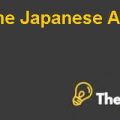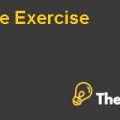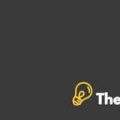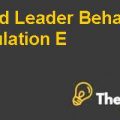3P Turbo-Cross Border Investment In Brazil Case Solution
Question: (a)
The possible barriers present for 3 Turbo’s investment in Brazil could be created due to the adverse political and economic situation in the country. In which, it was evaluated that, due to the recent political scandal their current president, Vilma Rousseau involvement in the Perpetrators corruption scandal, which led to nation-wide protest by the people, requiring Vilma to resign from office. Whereas, if she resigned, the next in line prime minister, Michel Meter was the prime candidate for president, she was also under investigation in the Perpetrators scandal and unpopular in her own right. Therefore, it can be determined that, due to the political turmoil within the country could create significant challenges for 3 Turbo. In which, the current unstable or upcoming government could create certain policies that could limited for compromise their ability to compete in the competitive market of Brazil, such as increase Tariffs for Automakers part manufactures. Which would expose the foreign company to higher taxes or tariffs, which would not be implemented on the local manufacturers and in turn allow them to gain a competitive edge over 3 turbo.On the other hand, the economic condition of the country was at its worst. As the growth rate of the country had decrease, while its inflation and interest rates had increased, which had contributed towards increasing its unemployment rates at an all-time high at 10.2%. Therefore, it can be assessed that, these types of economic conditions within the country could create barrier of 3 Turbo. In which, the declining economy would decrease the purchasing power parity of the consumers so much that, the people start to consider the use of turbo charger as a luxury item or expense. Which could significantly affect the sales of the company in the newly entered Brazilian marketer in worst case, the automaker in the country could decide to make cheaper car to appeal to the consumer generating low income in the declining economy of Brazil and reducer stop the use of turbo chargers in their vehicle manufactured for Brazil. Which, in turn, could significantly harm the position and profitability of the company in Brazil.
Question: (b)
The cash flows were calculated by estimating the projected volumes that would be sold for each year up to 2021 and estimating the price per units of the product sold each year. Which would enable us to estimate the sales revenues generated each year similarly, the production cost per units is the amount of money its takes to manufacture a single units from raw materials to finished goods. Hence, the sales revenues less cost of production would give the gross profit, which would be subtracted by the selling and administration expense incurred in the year. Furthermore, the depreciation amount would be subtracted to calculate the tax amount to be paid by the corporation in the year, as the depreciation expense incurred is a tax credit that need to be subtracted for the calculation of tax payment.After subtracting the tax amount form BIT the resultant depreciation would be added back to the profit after tax amount, to estimate the cash flows of the company for the 5 year period.
Question: (c)
In the parent analysis, it was assumed that the machinery would be purchased from loan acquired by German banks incurring 6% interest rates. Whereas, in the subsidiary analysis is was assumed that, the loan would be acquired from U.S banks incurring 8% interest rates, which are be seen for the excel exhibits illustrated below. However, it can be evaluated that, under both analysis conducted, whether an interest rate is charged at 6% or 8%. The Net present value of the project under both analysis remains relatively similar, without showing significant changes.
3P Turbo-Cross Border Investment In Brazil Harvard Case Solution & Analysis
Question: (d)
In the exhibit-3 illustrated below, show the cash flow valuation analysis of cheap financing proposed by a German vendor incurring 2% interest rates. In which, the annual loan payment of German cheap financing amounts to 4,773.564.Which would be subtracted by the inflated cash flows, inflated at a rate of 9% annually, to estimate the net cash flows generated each year. These cash flows would be discounted at a rate of 10% to estimate the present values of cash flows and in turn determined the Net present values of the project, under German vendor financing amounting to 65,711. However, it can be evaluated that, the NPV generated under German vendor financing was greater than the Np Vs generated under parent and subsidiary analysis. Therefore, it can be evaluated that, if given the option with respect to financing, it would choose the German vendor financing at 2% interest rate...........
This is just a sample partial case solution. Please place the order on the website to order your own originally done case solution.












